Hyundai Kona vs Vauxhall Grandland - Differences and prices compared
Costs and Efficiency:
Looking at overall running costs, both models reveal some interesting differences in everyday economy.
Hyundai Kona has a convincingly advantage in terms of price – it starts at 23100 £, while the Vauxhall Grandland costs 32600 £. That’s a price difference of around 9505 £.
Fuel consumption also shows a difference: Vauxhall Grandland manages with 2.60 L and is therefore significantly more efficient than the Hyundai Kona with 4.60 L. The difference is about 2 L per 100 km.
In terms of energy consumption, the advantage goes to the Hyundai Kona: with 14.60 kWh per 100 km, it’s distinct more efficient than the Vauxhall Grandland with 17.80 kWh. That’s a difference of about 3.20 kWh.
As for range, the Vauxhall Grandland performs distinct better – achieving up to 694 km, about 180 km more than the Hyundai Kona.
Engine and Performance:
Power, torque and acceleration say a lot about how a car feels on the road. This is where you see which model delivers more driving dynamics.
When it comes to engine power, the Vauxhall Grandland has a evident edge – offering 325 HP compared to 218 HP. That’s roughly 107 HP more horsepower.
In acceleration from 0 to 100 km/h, the Vauxhall Grandland is distinct quicker – completing the sprint in 6.10 s, while the Hyundai Kona takes 7.80 s. That’s about 1.70 s faster.
In terms of top speed, the Vauxhall Grandland performs minimal better – reaching 220 km/h, while the Hyundai Kona tops out at 210 km/h. The difference is around 10 km/h.
There’s also a difference in torque: Vauxhall Grandland pulls clearly stronger with 509 Nm compared to 265 Nm. That’s about 244 Nm difference.
Space and Everyday Use:
Whether family car or daily driver – which one offers more room, flexibility and comfort?
Seats: offers more seating capacity – vs .
In curb weight, Hyundai Kona is clearly perceptible lighter – 1370 kg compared to 1675 kg. The difference is around 305 kg.
In terms of boot space, the Vauxhall Grandland offers to a small extent more room – 550 L compared to 466 L. That’s a difference of about 84 L.
In maximum load capacity, the Vauxhall Grandland performs distinct better – up to 1645 L, which is about 345 L more than the Hyundai Kona.
When it comes to payload, Vauxhall Grandland barely noticeable takes the win – 495 kg compared to 490 kg. That’s a difference of about 5 kg.
Who comes out on top?
Overall, the Vauxhall Grandland shows itself to be wins the duel decisively and secures the title of DriveDuel Champion.
It convinces with the more balanced overall package and proves to be the more versatile choice for everyday use.
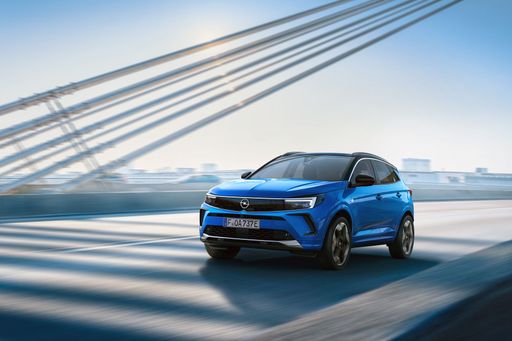 @ Opel / Stellantis Media
@ Opel / Stellantis Media
Vauxhall Grandland
Costs and Consumption
View detailed analysis
Engine and Performance
View detailed analysis
Dimensions and Body
View detailed analysis
Hyundai Kona
The Hyundai Kona wears its personality on the outside with bold styling and sprightly handling that turns city driving into something a little more fun than a commute. It blends practical space, modern tech and sensible running costs into a compact, stylish package — a smart pick if you want flair without paying luxury prices.
details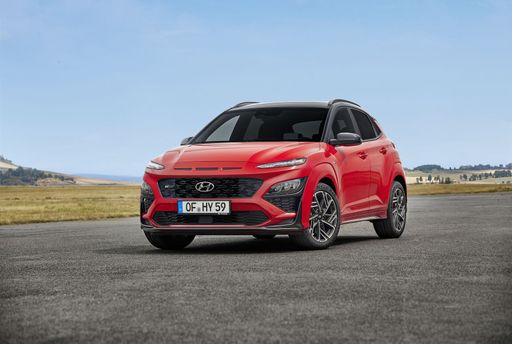 @ Hyundai Motor Company
@ Hyundai Motor Company
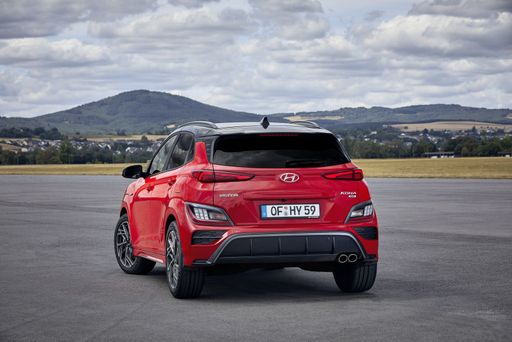 @ Hyundai Motor Company
@ Hyundai Motor Company
 @ Hyundai Motor Company
@ Hyundai Motor Company
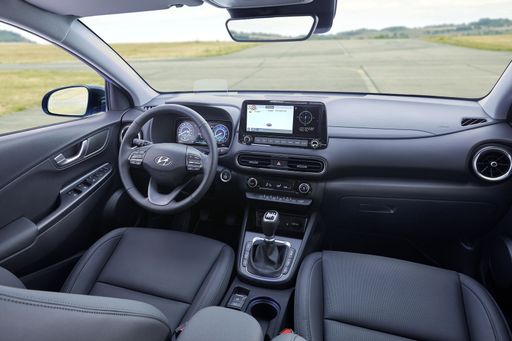 @ Hyundai Motor Company
@ Hyundai Motor Company
Vauxhall Grandland
The Opel Grandland feels like a sensible, well-rounded SUV — neat styling, a spacious cabin and a composed ride that turns daily driving into a quietly pleasant experience. It’s a smart choice for buyers who want modern tech, good economy and a dash of German practicality without shouting for attention.
details @ Opel / Stellantis Media
@ Opel / Stellantis Media
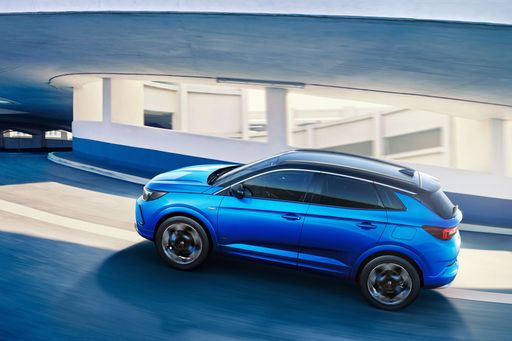 @ Opel / Stellantis Media
@ Opel / Stellantis Media
 @ Opel / Stellantis Media
@ Opel / Stellantis Media
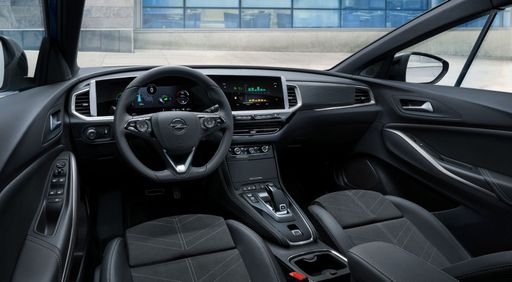 @ Opel / Stellantis Media
@ Opel / Stellantis Media
 @ Hyundai Motor Company
@ Hyundai Motor Company
|
 @ Opel / Stellantis Media
@ Opel / Stellantis Media
|
|
|
|
Costs and Consumption |
|
|---|---|
|
Price
23100 - 41600 £
|
Price
32600 - 51400 £
|
|
Consumption L/100km
4.6 - 7 L
|
Consumption L/100km
2.6 - 5.6 L
|
|
Consumption kWh/100km
14.6 - 16.8 kWh
|
Consumption kWh/100km
17.8 - 18.6 kWh
|
|
Electric Range
377 - 514 km
|
Electric Range
82 - 694 km
|
|
Battery Capacity
1.3 - 65.4 kWh
|
Battery Capacity
-
|
|
co2
0 - 163 g/km
|
co2
0 - 126 g/km
|
|
Fuel tank capacity
38 - 47 L
|
Fuel tank capacity
55 L
|
Dimensions and Body |
|
|---|---|
|
Body Type
SUV
|
Body Type
SUV
|
|
Seats
5
|
Seats
5
|
|
Doors
5
|
Doors
5
|
|
Curb weight
1370 - 1773 kg
|
Curb weight
1675 - 2325 kg
|
|
Trunk capacity
466 L
|
Trunk capacity
485 - 550 L
|
|
Length
4350 - 4385 mm
|
Length
4650 mm
|
|
Width
1825 mm
|
Width
1905 - 1934 mm
|
|
Height
1580 - 1585 mm
|
Height
1665 mm
|
|
Max trunk capacity
1300 L
|
Max trunk capacity
1580 - 1645 L
|
|
Payload
420 - 490 kg
|
Payload
425 - 495 kg
|
Engine and Performance |
|
|---|---|
|
Engine Type
Electric, Petrol, Full Hybrid
|
Engine Type
Electric, Petrol MHEV, Plugin Hybrid
|
|
Transmission
Automatic, Manuel
|
Transmission
Automatic
|
|
Transmission Detail
Reduction Gearbox, Manual Gearbox, Dual-Clutch Automatic
|
Transmission Detail
Reduction Gearbox, Dual-Clutch Automatic
|
|
Drive Type
Front-Wheel Drive, All-Wheel Drive
|
Drive Type
Front-Wheel Drive, All-Wheel Drive
|
|
Power HP
115 - 218 HP
|
Power HP
145 - 325 HP
|
|
Acceleration 0-100km/h
7.8 - 11.9 s
|
Acceleration 0-100km/h
6.1 - 10.2 s
|
|
Max Speed
162 - 210 km/h
|
Max Speed
170 - 220 km/h
|
|
Torque
200 - 265 Nm
|
Torque
230 - 509 Nm
|
|
Number of Cylinders
3 - 4
|
Number of Cylinders
3 - 4
|
|
Power kW
85 - 160 kW
|
Power kW
107 - 239 kW
|
|
Engine capacity
998 - 1598 cm3
|
Engine capacity
1199 - 1598 cm3
|
General |
|
|---|---|
|
Model Year
2024 - 2025
|
Model Year
2024 - 2025
|
|
CO2 Efficiency Class
A, D, C, E, F
|
CO2 Efficiency Class
A, D, B
|
|
Brand
Hyundai
|
Brand
Vauxhall
|
Is the Hyundai Kona offered with different drivetrains?
Available configurations include Front-Wheel Drive or All-Wheel Drive.
The prices and data displayed are estimates based on German list prices and may vary by country. This information is not legally binding.
